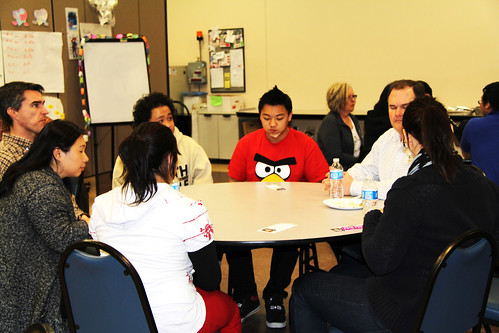In Minnesota, USDA’s Natural Resources Conservation Service (NRCS) is piloting an innovative partnership to introduce high school students to careers in science and agriculture.
Since last year, NRCS has teamed up with the Hmong American Partnership, a nonprofit that provides services to Minnesota’s Hmong community. The Hmong are an ethnic group from the mountains of Southeast Asia, and the Twin Cities—St. Paul and Minneapolis—have the highest concentration of Hmong populations in the country.
Hmong teenagers in the Twin Cities face some challenges typical for urban youth (a low rate of college attendance, lack of access to computers and other technology) and some less typical (many of them serve as the family translators, and they often share a cell phone with their entire family).
The goal of the NRCS–Hmong American Partnership program is to educate Hmong students about careers in agriculture-related and other science careers, which they may not consider otherwise. Kids who participate in the program go to the Hmong American Partnership Community Center in St. Paul once a week to hear guest lecturers who have a variety of jobs within NRCS in Minnesota and work with mentors to learn about agriculture and agricultural careers. They also go on field trips to farms and other NRCS offices and participate in discussions about all of these experiences.

NRCS is a federal agency that works with farmers and ranchers to implement voluntary conservation practices that will not only protect the nation’s natural resources, but also maintain or increase productivity. Possible career paths with the agency include soil conservationist, environmental engineer and biologist.
The long-term goal of the NRCS–Hmong American Partnership program is to increase Hmong enrollment in college and to cultivate the next generation of conservationists—hopefully some of whom end up joining the NRCS workforce.
The program is serving as a pilot for a new approach to NRCS recruitment of underrepresented populations. Over the next few years, to increase its employee diversity, the agency hopes to create similar partnerships with community-based groups across the country. These partnerships will enable NRCS to reach potential recruits at a younger age, providing them with the tools and information they need to become conservationists, if that’s a career path that interests them.
In Minnesota, the students in the NRCS–Hmong American Partnership program were recruited because of their interest in conservation, agriculture, and/or science in general. This year 11 students participated, and more students are expected to participate in coming years.
Follow NRCS on Twitter.
Check out other conservation-related stories on the USDA blog.

